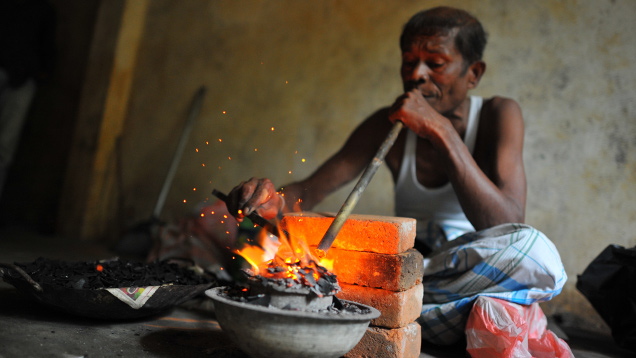GIA Lab Reports on Low-Temperature Heat Treatment of Mozambique Ruby
April 28, 2015

Over the last 30 years, Sri Lankan burners have refined locally produced furnaces—including the Lakmini—and gained extensive heat treatment expertise. The top practitioners in that country now rival those in Thailand, especially where low-temperature heating of corundum is concerned.
In early 2015, as a result of trade concerns, GIA researchers undertook two sessions of experimental low-temperature heat treatment of Mozambique ruby, one conducted in collaboration with burners in Sri Lanka and the other in Bangkok. For the latter, the temperatures reached ranged from approximately 550o to 750oC (1,022o to 1,382oF). The researchers confirmed that treatment caused a noticeable decrease of the blue color component in many samples.
These experiments aimed to determine whether low-temperature heating produced any detectable alterations to the treated gems’ inclusions, IR spectra, or chemical composition. The results appear in a study titled “‘Low-Temperature’ Heat Treatment of Mozambique Ruby - Results Report.”
Using high magnification and fiber-optic lighting, GIA researchers were able to show that many—though not all—inclusions were affected by low-temperature heating. In many cases, fractures appeared around crystals, with larger crystals the most affected. Mica, feldspar, and chalcopyrite inclusions showed the most alteration, with amphibole crystals showing the least. Fractures lined with limonite or iron staining might also appear darker after low-temperature heating.
Treatment caused modest but observable changes in peaks detected by FTIR spectroscopy at 3309 and 3161 cm-1. Trace-element analysis using LA-ICP-MS showed no significant change after treatment.
This study confirms that gemological laboratories have the capability to detect low-temperature treatment in rubies from Mozambique, especially with careful observation of inclusions and certain peaks in IR spectra.



